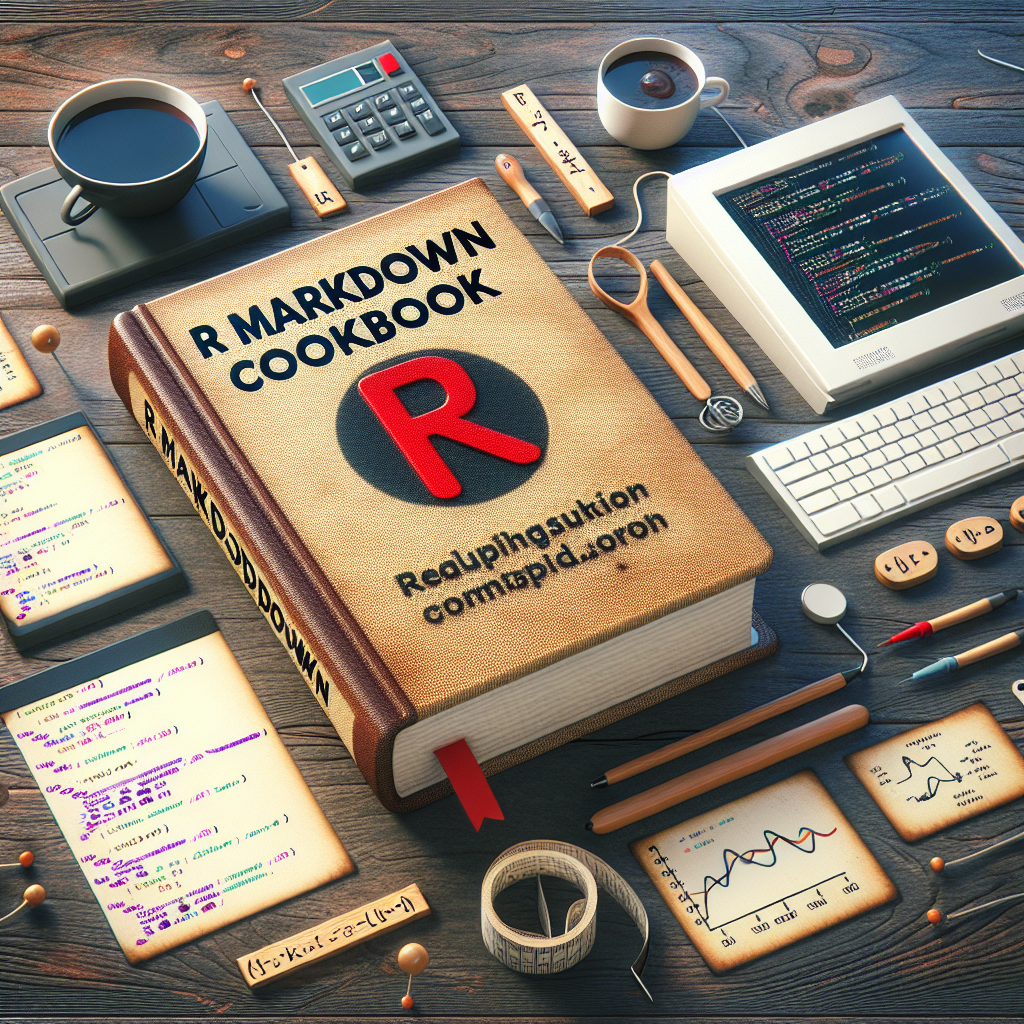R Markdown Cookbook Guide
Master R Markdown with this comprehensive guide, offering practical tips and examples for creating professional, reproducible documents. From installation to advanced features, elevate your data analysis and reporting skills.

"Tired of manually formatting your Markdown? Try our free, one-click Markdown converter and simplify your writing workflow today!"
In the world of data science and statistical analysis, R Markdown has emerged as a powerful tool for creating dynamic documents, reports, and presentations. Whether you're a seasoned data scientist or a beginner looking to enhance your R skills, the "R Markdown Cookbook" is your go-to resource for mastering the art of R Markdown. This article will guide you through the essentials of R Markdown, providing practical tips, tricks, and examples to help you create professional and reproducible documents.
What is R Markdown?
R Markdown is an open-source tool that allows you to create documents that combine R code, results, and narrative text. It is built on top of R, a popular programming language for data analysis, and Markdown, a lightweight markup language. With R Markdown, you can generate dynamic reports, presentations, dashboards, and even websites, all while ensuring reproducibility and ease of sharing.
Why Use R Markdown?
1. Reproducibility
R Markdown documents are fully reproducible. This means that anyone with access to your R Markdown file can reproduce your analysis and results, ensuring transparency and reliability.
2. Integration with R
R Markdown seamlessly integrates with R, allowing you to embed R code directly within your document. This means you can execute code chunks, visualize data, and include results directly in your document.
3. Versatility
R Markdown supports multiple output formats, including HTML, PDF, Word, and even interactive documents and dashboards. This versatility makes it suitable for a wide range of applications, from academic papers to business reports.
4. Ease of Use
Markdown syntax is simple and easy to learn, making it accessible even for those with limited programming experience. Additionally, R Markdown provides a user-friendly interface through RStudio, a popular integrated development environment (IDE) for R.
Getting Started with R Markdown
1. Installation
To get started with R Markdown, you need to install R and RStudio. RStudio provides a comprehensive environment for working with R Markdown, including a built-in editor, preview functionality, and various tools for managing your projects.
2. Creating an R Markdown Document
Once you have RStudio installed, creating an R Markdown document is straightforward. Simply go to File > New File > R Markdown, and choose your desired output format. RStudio will generate a template with basic structure and examples to help you get started.
3. Understanding the Structure
An R Markdown document consists of three main components:
- YAML Header: This is the metadata section at the top of the document, where you specify the title, author, date, and output format.
- Markdown Text: This is the narrative part of your document, written in Markdown syntax.
- R Code Chunks: These are sections where you embed R code. Code chunks can be executed, and their results can be included in the final document.
Key Features and Tips
1. Code Chunks
Code chunks are the heart of R Markdown. You can insert code chunks using the ````{r}` syntax. Within a code chunk, you can write and execute R code, and the results (including plots and tables) will be automatically included in your document.
2. Inline R Code
In addition to code chunks, you can also include inline R code using the r syntax. This is useful for embedding dynamic values, such as calculated statistics, directly within your text.
3. Customizing Output
R Markdown provides extensive customization options. You can control the appearance of your document using CSS styles, customize plots with ggplot2, and even create interactive documents using Shiny.
4. Knitting the Document
To generate the final output, you need to "knit" your R Markdown document. This process converts your R Markdown file into the specified output format, such as HTML or PDF. You can knit the document using the "Knit" button in RStudio or by running the rmarkdown::render() function in R.
Advanced Topics
1. Interactive Documents
R Markdown supports the creation of interactive documents using Shiny. Shiny allows you to build interactive web applications directly within your R Markdown document, enabling dynamic user inputs and real-time data visualization.
2. Dashboards
With the flexdashboard package, you can create interactive dashboards using R Markdown. Flexdashboard provides a simple and intuitive syntax for organizing your content into tabs, sidebars, and various layout options.
3. Bookdown
For those looking to create comprehensive documentation or books, the bookdown package extends R Markdown's capabilities. Bookdown allows you to write multi-chapter documents, generate tables of contents, and even publish your work online.
Conclusion
The "R Markdown Cookbook" is an invaluable resource for anyone looking to master the art of R Markdown. By combining R's powerful data analysis capabilities with Markdown's simplicity, R Markdown enables you to create professional, reproducible, and versatile documents. Whether you're a data scientist, researcher, or analyst, mastering R Markdown will enhance your productivity and the quality of your work.
Start exploring the "R Markdown Cookbook" today and unlock the full potential of R Markdown in your projects!



Comments ()